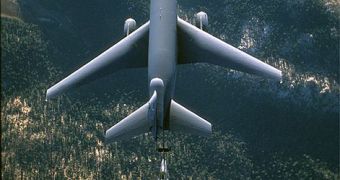According to experts from the University of Warwick in the UK, and the aeronautics company Airbus, conventional plane wings may soon become a thing of the past. The researchers, whose work was funded by the Engineering and Physical Sciences Research Council (EPSRC), showed that unusual wing designs, which had the ability to remodel the areas in which air usually wiggled around the fuselage, could save as much as 20 percent of the regular amount of fuel used for any given flight.
The most promising results, and the largest savings at that, were obtained with wing designs that made air wiggle sideways in reference to the plane. The innovation could significantly reduce mid-flight air drag on the wings and the fuselage as a whole, and relies on a very simple operation procedure – very small, powered air jets, which make the air flow that usually moves over and beneath the wing oscillate back and forth across the length of the wing.
The basic scientific principle that is used for these new air flow systems is the Helmholtz resonance, which is most obvious in daily life when blowing air inside a bottle. When air is forced inside a cavity by an outside force, the “atmosphere” inside the cavity compresses, the pressure increases, and the air is expelled out. At the same time, however, more air is also sucked in. Overall, at the entrance to the cavity, or the bottleneck, a small oscillation occurs. This is the very oscillation used for the new studies.
“This has come as a bit of a surprise to all of us in the aerodynamics community. It was discovered, essentially, by waggling a piece of wing from side to side in a wind tunnel. The truth is we're not exactly sure why this technology reduces drag but with the pressure of climate change we can't afford to wait around to find out. So we are pushing ahead with prototypes and have a separate three year project to look more carefully at the physics behind it,” University of Warwick project leader, Dr. Duncan Lockerby said of the find.
“This could help drastically reduce the environmental cost of flying. Research like this highlights the way UK scientists and engineers continue to make significant contributions to our lives,” EPSRC's Senior Manager for Aerospace and Defense, Simon Crook, concluded.

 14 DAY TRIAL //
14 DAY TRIAL //